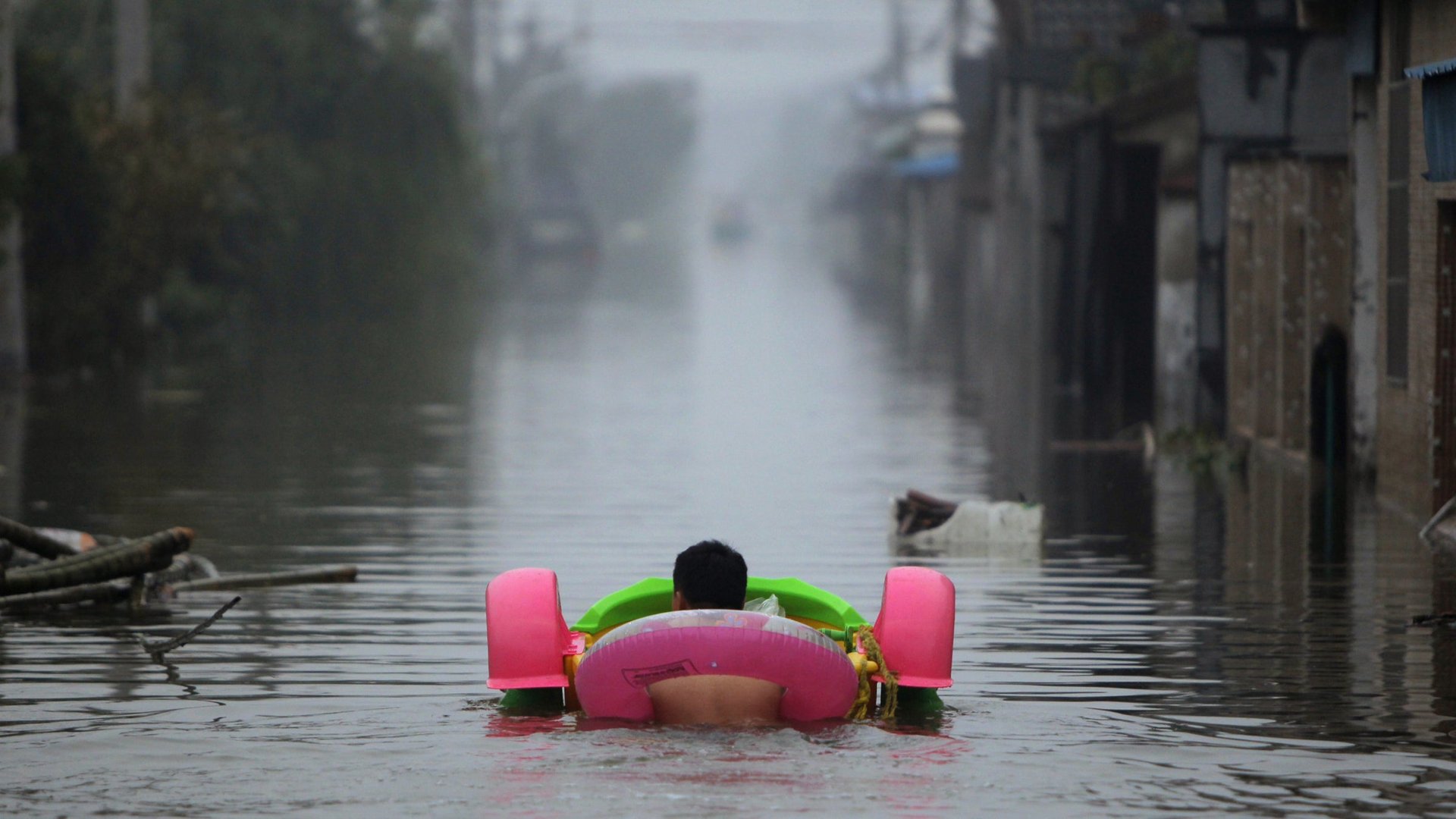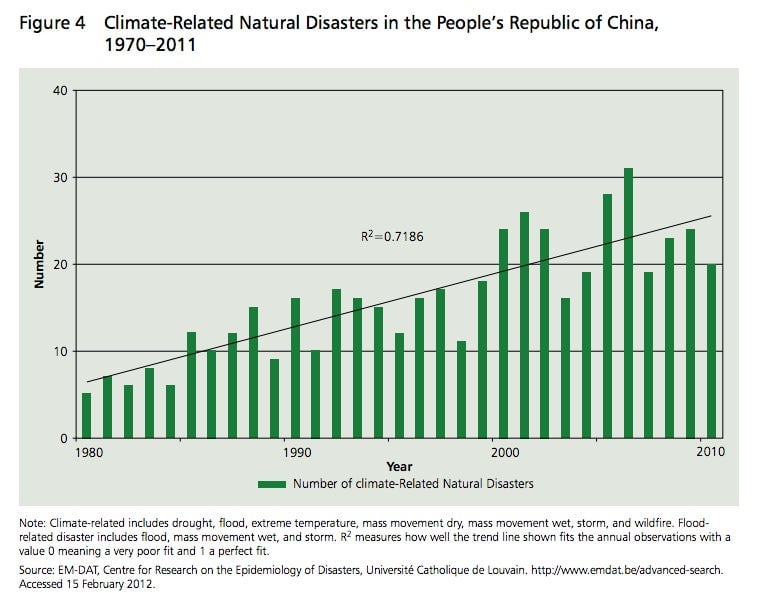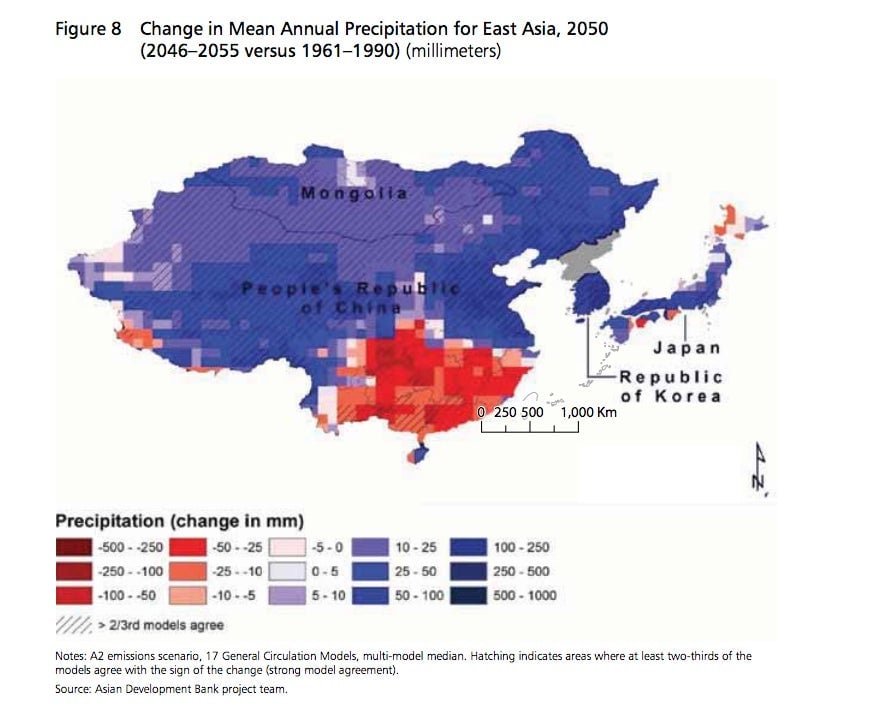The scary reasons why China should spend $11 billion a year on “climate-proofing”
In early October, Typhoon Fitow strafed China’s eastern seaboard with the heaviest rainfall in a century, leaving Shanghai, Ningbo and Yuyao, the latter two cities located in Zhejiang province, with some $2 billion in damages. In Yuyao, where losses are estimated to have hit $1.15 billion, thousands took to the waterlogged streets in protest last week, braving threat of arrest by police in riot gear. Why the outrage? Many residents felt the government fumbled its response to the flooding, and took too long to restore water and electricity.


In early October, Typhoon Fitow strafed China’s eastern seaboard with the heaviest rainfall in a century, leaving Shanghai, Ningbo and Yuyao, the latter two cities located in Zhejiang province, with some $2 billion in damages. In Yuyao, where losses are estimated to have hit $1.15 billion, thousands took to the waterlogged streets in protest last week, braving threat of arrest by police in riot gear. Why the outrage? Many residents felt the government fumbled its response to the flooding, and took too long to restore water and electricity.
The government’s response in Yuyao reflects a broader lack of preparation for flooding-related disasters, according to a new report by the Asian Development Bank. This isn’t just a political liability. The ADB project that, by 2050, China could face hundreds of billions in economic losses each year as a result of flooding from rain and storm surges. The good news is that if China spends around $11 billion a year on upgrading its infrastructure, it can prevent most of that, says the ADB.

At present, the government is prepared to cope with the kind of freak rainfall that happens once in 20 years. That means as much as a quarter of China’s population will face annual losses of at least 1% of local GDP due to flooding (pdf, p.46). That’s dangerous given that China will bear the brunt of Asia’s rising rainfall:

On top of that, the ADB estimates that, from now until 2050, China will lose 27 square kilometers (10.4 square miles) a year to rising sea levels. Economic losses from rising sea levels and fiercer storms will displace a total of 1 million people and cost the country another $150 billion by 2050. Even using more conservative estimates of sea-level rise, some 500,000 people will still need to be moved, with an $86 billion price tag.

What makes all this worse is that areas where wealth and population are growing the fastest are also more exposed to natural disasters. In Shanghai, for instance, the population will jump from 23 million today to more than 40 million in 2050. That year, the city’s GDP per capita will be higher than that of both South Korea and Japan. But that means that nearly $3.6 trillion in annual output will be concentrated in the major Chinese city most vulnerable to natural disaster.
So what can China do? The ADB says that if China were to spend on flood defenses for once-in-50-year rains, it could substantially reduce the cost of damage caused by storms or floods. As for coastal infrastructure, if China spends just $1 billion a year on strengthening sea dikes, beaches and ports against encroaching tides, it can keep much of the economic risk at bay, reducing the number of affected from 1 million to 26,000 (p.79 and 83).
That’s the good news. The bad news is that the $11 billion price tag for fortifying infrastructure against natural disaster is an average of all the models ADB used. A more dramatic scenario for climate change could cost China as much as $44 billion a year. The factor that will determine the severity of flooding due to climate change is rainfall, apparently. The climate scenarios that cost the most happen to be “among the wettest,” says the ADB (p.38).